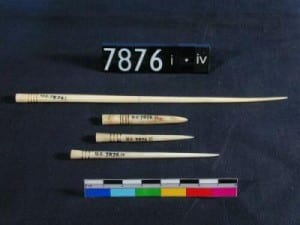Not So Lost Cities
By Debbie J Challis, on 31 May 2011
The use of ‘space archaeology’, a pioneering approach using satellite technology and infra-red surveying, in finding previously undiscovered monuments and towns from the ancient past in Egypt was illustrated on BBC1 last night (Egypt’s Lost Cities, BBC1, 30 May 2011). And very exciting it all was too as the group dashed from site to site, came up against problems with permits to dig, then got support from the supreme authority, dashed around some more sites, got other archaeologists to dig for them (with varying results) and then were embroiled in a democratic revolution.
I was sceptical of how good this show would be, yet found myself fascinated by the different sites, mainly in the middle part of Egypt, which included many that Flinders Petrie excavated 100 years ago. In fact, there was a reference to a dig at Abydos in the late nineteenth century and I found myself telling the presenters: ‘It was Petrie you fools!’ In fact, Tanis, the city which Dr Sarah Parcak and her team (there is always curiously little mention of a ‘team’ on television archaeology) showed to be massive and densely built, was one of Petrie’s first excavation for the sites for the Egypt Exploration Fund in 1884-5. Petrie surveyed pyramids at Saqqara and Dahshur, the site behind Saqqara not mentioned where there is the Red pyramid and Bent pyramid. Petrie used the cutting edge techniques of his own time in his surveying work, as well as his immense mathematical talents. Petrie also surveyed and excavated at Hawara, the site of the lost ‘labyrinth’ and 12th Dynasty pyramid, and Gurob, the site of the royal palace and ‘harem’.
Enjoyable as the excited franticness was and refreshing as the emphasis on sites not directly allied to Tutankhamen was, something really bothered me about this programme. The CGI was clever and expensive but all the sites looked sun bleached with no colour or objects. Then while the presenters were explaining about the revolution against the dictatorship, it struck me. There was no sense of who the people who lived in ancient, or for that matter contemporary, Egypt were; their interests, their passions, their family life, work or leisure.
You can only get small glimpses of the people from the past in archaeology and this is mainly through the objects they leave behind. Not the big glittering monuments or complex city plans, but things people used to make other things with, play with and thought important enough to have buried with them. A museum in some sense is a mausoleum and archaeological museums are more so than others. But for me the cases full of objects from Hawara, Gurob and elsewhere in the Petrie Museum brings the past alive more than any satellite technology.
And of course, excavations within Egypt are continuing. The Gurob Harem Palace Project (GHPP), an international team including members from the Petrie Museum, have been working at the site of Gurob since 2005. Deputy Director of the GHPP, Jan Picton, says that “Dr Parcak’s satellite imagery will help direct future excavation strategy but much of what was ‘discovered’ in the programme was already well known. The GHPP have been uncovering the lives of the people of Gurob as shown by the amazing objects we hold in the Petrie museum from the site.” Objects include hairpins, writing palettes, board games, socks, pots of all shapes, sizes and uses, dried food, papyri, sketches on potsherds, lists of washing. . . the list continues.
Debbie Challis, Petrie Museum of Egyptian Archaeology
You can view Egypt’s Lost Cities on BBC I Player until Sunday 5 June:
http://www.bbc.co.uk/iplayer/episode/b011pwms/Egypts_Lost_Cities/
One Response to “Not So Lost Cities”
- 1
 Close
Close




I enjoyed your article very much.
I am an amateur in archeaology though no more so than some of the pretenders in the media with “scripted programs” aimed selling themselves and adding little original or organised thought on their subjects Thes programs in some cases further muddy the waters.
I am qualified in statistics and chemical engineering and a CMIOSH. I have made personal visits to Petrie Museum at UCL – it is fascinating and with careful observation very informative
My interests spread over many fields from natural history, history, archeaology, geology, photography engineering, and science. I feel I am able to see links across boundaries that many specialists do not.
I am often appalled by the sensationalism of the media.Claims that ancients did the impossible (oxymoron) when clearly that is not the case. William Petrie had discoverd ( and recorded from early Egypt of vases machined from granite) – so the cutting of core 7 (on Ancient Impossible) in a much later Egypt which the programme labelled impossible was clearly not. This could be done with any strong or metal formed core pipe (Egytians had some access to meteorite iron though extremely rare) using diamonds corundum, sapphire some sands and grits as the cutting material. Though this would be slower than could be done today with diamond core bits.
“Television Archaeolgist and so called scientists” involved in these programs are a disgrace who William Petrie with his disciplined methods would have put in their place given the opportunity. Cutting granite and hard objects was done in Roman times, if not before, using water pressure and slurry of abrasives.
I look forward to further opportunities to vist the museum though this only arises once per year as I now live in Scotland